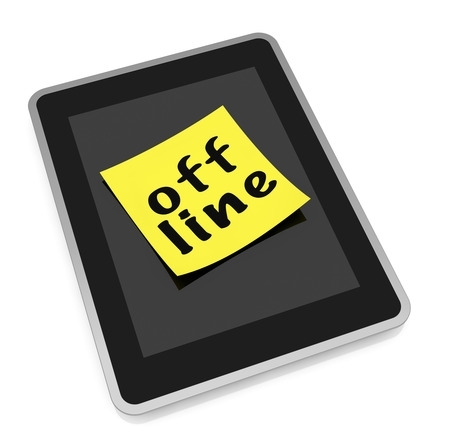Offline Mobile Learning
From One Extreme to the Other
Twenty-five years ago, technology-mediated learning was entirely offline. Today we've gone to the opposite extreme - everything is online. In fact, almost everything is built from the ground up with the assumption that learners have a persistent internet or intranet connection.
There are, however, many scenarios where people need to learn but don't have access to data networks. Factory workers, travelers, workers in developing nations, commuters, workers in highly-secure offices - all of these learners and more may have offline learning needs. Most current Learning Management Systems simply can't accommodate their needs; they require authentication and ongoing communication to serve learning and record progress.
Finding a Middle Ground
The situation is changing, but it's changing slowly. The Tin Can API was recently introduced as a replacement for SCORM by enabling learning delivery and tracking outside of Learning Management Systems. It's designed to accommodate offline learning - yet very few LMS vendors are recognizing the benefits of building in this capability. Instead, they'll tout Tin Can compliance without including a way to view learning content on mobile devices that reports back to the LMS following periods of offline activity. A small number of LMS vendors are building in offline mobile support, including Saba and Expertus, but they're at the higher end and the offerings aren't yet mature.
For the near future, the situation for offline mobile learning isn't likely to improve. Costs associated with Tin Can adoption are high, so it won't be within reach for most learning providers for quite some time. While HTML5 offered some offline capability for learning, LMS integration and user experience are lacking. Vendors haven't reported hearing much demand for offline capabilities, so it's not a development priority. Learning providers also aren't looking beyond SCORM to see how learning could benefit from new integrations with working environments, new opportunities to measure additional learning activities or new metrics for measuring learning engagement and knowledge transfer.
What's the Interim Solution?
If you don't have access to a Learning Management System that supports Tin Can and has a mobile app to serve learning content offline, there are still a few options available to you.
For content that isn't sensitive and doesn't need to be tracked, create it or package it in an HTML5 format that supports offline viewing. With the right user guidance, learners can access the materials while they have a network connection and make them available for later offline viewing. It's not ideal, but it works. For users of Articulate authoring tools, content can be exported to Tin Can and HTML5 and downloaded to the Articulate Mobile Player for offline use. Unfortunately, this will only work if your learners are all using iPads.
For content that does need to be tracked, options are limited. Content could be moved to a database platform that's synced when there's connectivity, but this requires significant custom development, including moving data from the database to an LMS. HTML5 solutions could also be created to send data when a network connection is available.
Of course, the best thing to do make sure your needs are met is to talk to LMS vendors about adding the tools and features that you need. If you don't push for change, how will companies know what you want?






